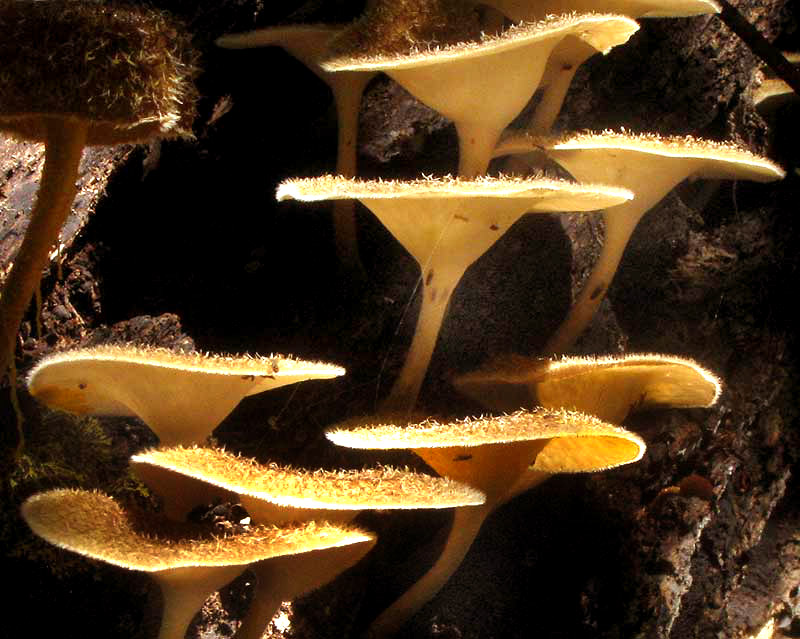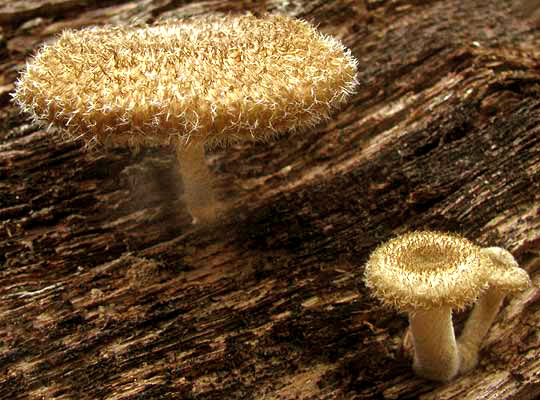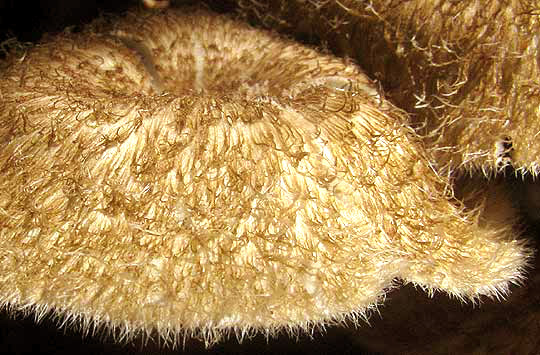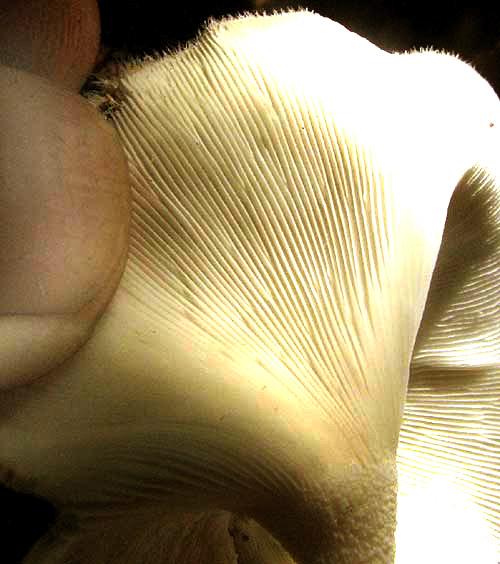Excerpts from Jim Conrad's
Naturalist Newsletter

from the August 12, 2012 Newsletter issued from the woods of the Loess Hill Region a few miles east of Natchez, Mississippi, USA
HAIRY FUNNEL MUSHROOM
Down in the steamy, shadowy bottom of a woody ravine below the trailer a tree trunk lay on a stream bank, black and spongy in a late stage of decomposition. A ten-ft section of it bristled with picturesque, hairy-topped, funnel-shaped mushrooms with caps about two inches across (5cm), as shown above.
At first I thought this was a new species for me, but then I noticed that toward the population's edges where the rotting drunk became drier and more exposed to the elements the mushrooms gradually morphed into a smaller, more compact form -- a form I've seen a lot of -- as shown below:

The extremely brown-hairy, leathery cap with a much sunken center is very unusual and distinctive. A close-up of the hairs is shown below:

Another distinctive feature of the species is how the spore-producing gills beneath the cap are so extremely thin and close-packed. They gradually melt into the stem with no clear contact zone, as shown with my thumb holding back the pliable cap, below:

This is LENTINUS CRINITIS, a species frequently documented on decaying logs along the US Gulf Coast, but so infrequently mentioned in mushroom guides that apparently it has no common English name. It needs an English name because in this area during dry spells when other mushrooms disappear, often it's our most conspicuous mushroom. Then it's dried into a tough, shriveled state, but it's a mushroom nonetheless. So, let's invent a name, calling it the Hairy Funnel, just so we can talk about it.
It's too leathery to eat, though I read that Brazilian indigenous people boil it until it's soft enough to swallow.